Input interpretation

aluminum tribromide
Chemical names and formulas
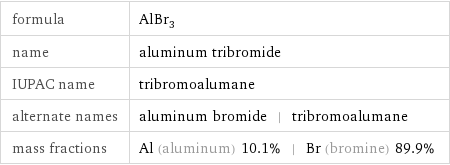
formula | AlBr_3 name | aluminum tribromide IUPAC name | tribromoalumane alternate names | aluminum bromide | tribromoalumane mass fractions | Al (aluminum) 10.1% | Br (bromine) 89.9%
Lewis structure
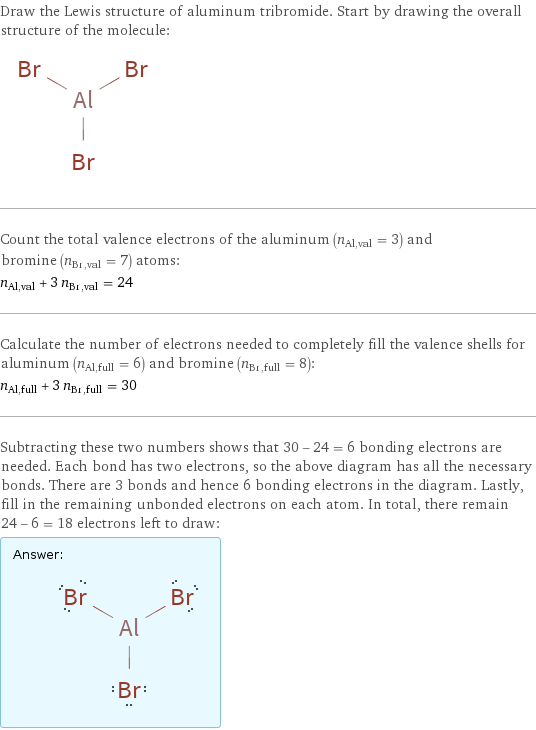
Draw the Lewis structure of aluminum tribromide. Start by drawing the overall structure of the molecule: Count the total valence electrons of the aluminum (n_Al, val = 3) and bromine (n_Br, val = 7) atoms: n_Al, val + 3 n_Br, val = 24 Calculate the number of electrons needed to completely fill the valence shells for aluminum (n_Al, full = 6) and bromine (n_Br, full = 8): n_Al, full + 3 n_Br, full = 30 Subtracting these two numbers shows that 30 - 24 = 6 bonding electrons are needed. Each bond has two electrons, so the above diagram has all the necessary bonds. There are 3 bonds and hence 6 bonding electrons in the diagram. Lastly, fill in the remaining unbonded electrons on each atom. In total, there remain 24 - 6 = 18 electrons left to draw: Answer: | |
3D structure
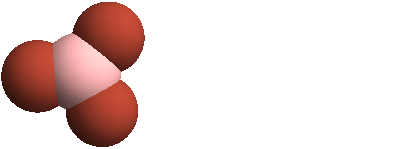
3D structure
Basic properties
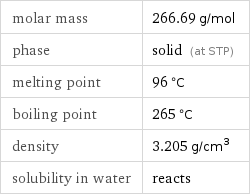
molar mass | 266.69 g/mol phase | solid (at STP) melting point | 96 °C boiling point | 265 °C density | 3.205 g/cm^3 solubility in water | reacts
Units

Solid properties (at STP)

density | 3.205 g/cm^3 vapor pressure | 0.9998 mmHg
Units

Thermodynamic properties
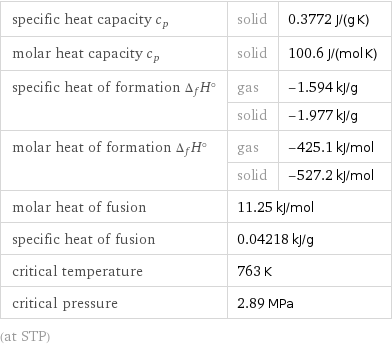
specific heat capacity c_p | solid | 0.3772 J/(g K) molar heat capacity c_p | solid | 100.6 J/(mol K) specific heat of formation Δ_fH° | gas | -1.594 kJ/g | solid | -1.977 kJ/g molar heat of formation Δ_fH° | gas | -425.1 kJ/mol | solid | -527.2 kJ/mol molar heat of fusion | 11.25 kJ/mol | specific heat of fusion | 0.04218 kJ/g | critical temperature | 763 K | critical pressure | 2.89 MPa | (at STP)
Chemical identifiers
(Br)Br InChI identifier | InChI=1/Al.3BrH/h;3*1H/q+3;;;/p-3/fAl.3Br/h;3*1h/qm;3*-1 RTECS number | BD0350000 MDL number | MFCD00003421](../image_source/fa8825430c4b9cb841f3db5e80855aca.png)
CAS number | 7727-15-3 PubChem CID number | 24409 PubChem SID number | 24852613 SMILES identifier | [Al](Br)(Br)Br InChI identifier | InChI=1/Al.3BrH/h;3*1H/q+3;;;/p-3/fAl.3Br/h;3*1h/qm;3*-1 RTECS number | BD0350000 MDL number | MFCD00003421
NFPA label

NFPA label
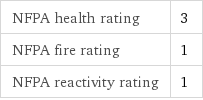
NFPA health rating | 3 NFPA fire rating | 1 NFPA reactivity rating | 1
Toxicity properties

RTECS classes | other